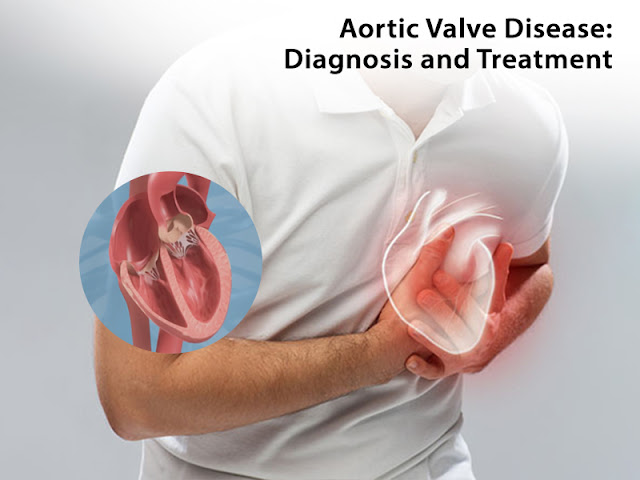Aortic Valve Disease: Diagnosis and Treatment
Aortic valve disease refers to any condition that affects the aortic valve, which is one of the four valves in the heart responsible for regulating blood flow. The aortic valve separates the left ventricle (the heart chamber that pumps oxygenated blood to the body) from the aorta (the main artery that carries blood to the rest of the body). Below, a cardiologist in Newtown explains the diagnosis and treatment of aortic valve disease.
Diagnosis
Physical examination: During a routine check-up or when symptoms are present, your cardiologist may listen to your heart using a stethoscope. Abnormal heart sounds, such as a murmur, may indicate aortic valve disease.
Echocardiogram: This non-invasive test uses sound waves to create images of the heart. It provides detailed information about the structure and function of the aortic valve, helping to diagnose valve abnormalities.
Electrocardiogram (ECG): According to the best heart specialist in Saltlake, an ECG measures the electrical activity of the heart. It can detect irregularities in heart rhythm or signs of stress on the heart caused by aortic valve disease.
Cardiac MRI or CT scan: These imaging techniques provide detailed images of the heart and can help evaluate the severity of aortic valve disease and assess the condition of surrounding structures.
Treatment
Medications: Depending on the severity and symptoms of aortic valve disease, medications may be prescribed to manage symptoms, control blood pressure, or prevent complications. Medications can help relieve symptoms.
Valve repair: In some cases, the aortic valve can be surgically repaired. This procedure involves reshaping or reconstructing the damaged valve to improve its function. Valve repair is usually preferred over valve replacement whenever feasible.
Valve replacement: When the aortic valve is severely damaged or cannot be repaired, valve replacement surgery may be necessary. This procedure involves replacing the diseased valve with a mechanical valve or a biological valve (usually made from animal tissue or a human donor).
Transcatheter aortic valve replacement (TAVR): TAVR is a minimally invasive procedure that allows for the replacement of the aortic valve without open-heart surgery. It is typically reserved for high-risk or inoperable patients.
Regular monitoring and follow-up: Regardless of the treatment approach, individuals with aortic valve disease require regular follow-up appointments to monitor their condition, assess valve function, and adjust medications if needed.
Aortic valve disease is a serious condition that requires proper diagnosis and treatment to manage its impact on heart function and overall health. Consult with a cardiologist in Newtown for proper monitoring. This will ensure the long-term effectiveness of treatment and prevent complications.
Physical examination: During a routine check-up or when symptoms are present, your cardiologist may listen to your heart using a stethoscope. Abnormal heart sounds, such as a murmur, may indicate aortic valve disease.
Echocardiogram: This non-invasive test uses sound waves to create images of the heart. It provides detailed information about the structure and function of the aortic valve, helping to diagnose valve abnormalities.
Electrocardiogram (ECG): According to the best heart specialist in Saltlake, an ECG measures the electrical activity of the heart. It can detect irregularities in heart rhythm or signs of stress on the heart caused by aortic valve disease.
Cardiac MRI or CT scan: These imaging techniques provide detailed images of the heart and can help evaluate the severity of aortic valve disease and assess the condition of surrounding structures.
Medications: Depending on the severity and symptoms of aortic valve disease, medications may be prescribed to manage symptoms, control blood pressure, or prevent complications. Medications can help relieve symptoms.
Valve repair: In some cases, the aortic valve can be surgically repaired. This procedure involves reshaping or reconstructing the damaged valve to improve its function. Valve repair is usually preferred over valve replacement whenever feasible.
Valve replacement: When the aortic valve is severely damaged or cannot be repaired, valve replacement surgery may be necessary. This procedure involves replacing the diseased valve with a mechanical valve or a biological valve (usually made from animal tissue or a human donor).
Transcatheter aortic valve replacement (TAVR): TAVR is a minimally invasive procedure that allows for the replacement of the aortic valve without open-heart surgery. It is typically reserved for high-risk or inoperable patients.
Regular monitoring and follow-up: Regardless of the treatment approach, individuals with aortic valve disease require regular follow-up appointments to monitor their condition, assess valve function, and adjust medications if needed.


.jpg)


0 Comments